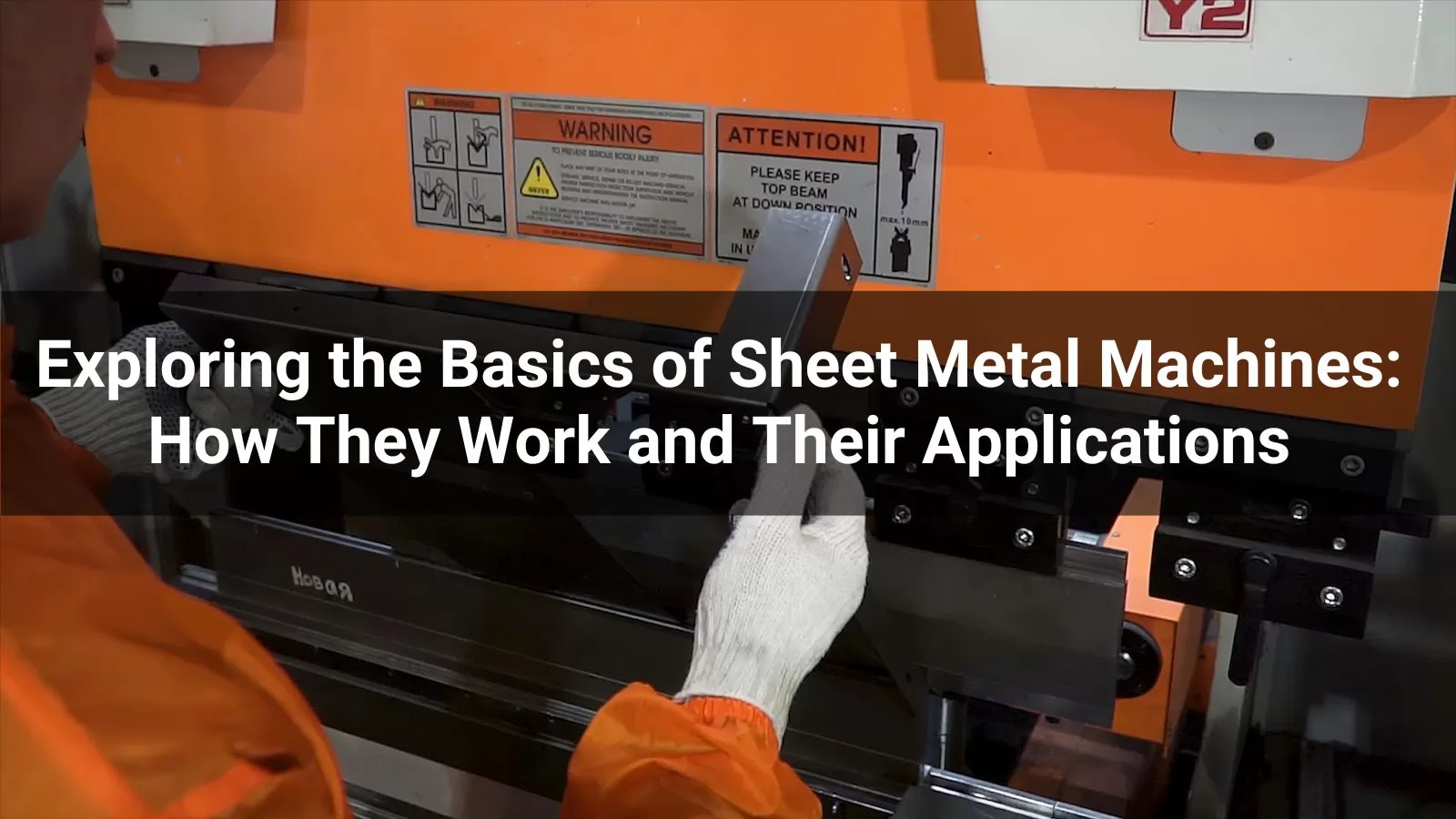





Sheet metal machines are essential tools in modern manufacturing, used to transform metal sheets into components for a wide range of applications. These machines are designed to handle thin sheets of metal, typically made from materials like steel, aluminum, copper, and brass, and process them through various operations, including cutting, bending, punching, and shaping. Understanding how sheet metal machines work and the specific roles they play across industries is crucial for businesses and professionals involved in metal fabrication.
There are several types of sheet metal machines, each designed for a specific function. Laser cutters, for example, use a high-powered laser beam to cut metal sheets into intricate shapes and patterns. The laser melts, burns, or vaporizes the metal, and a gas is blown through the nozzle to assist in the cutting process, leaving a clean edge. Laser cutting is commonly used in industries requiring precision, such as automotive and medical device manufacturing. Press brakes are machines designed to bend metal sheets into desired angles. They use a top punch and a bottom die to apply pressure on the sheet, bending it into the required shape. Press brakes are versatile and can be automated for high precision, making them ideal for producing metal enclosures, brackets, and panels. Shearing machines, on the other hand, are used for straight-line cutting, where a pair of blades shear the metal to the desired length or shape. This process does not involve melting the material and is ideal for tasks like cutting metal panels for roofing and signage.
Stamping machines are used for mass production, where a punch presses a metal sheet into a die to create specific shapes or patterns. This high-speed process is widely used for manufacturing car body panels and electrical components. Roll forming machines work by passing a metal sheet through a series of rollers, gradually shaping it into a continuous form. This process is ideal for producing long lengths of metal profiles, such as those used in roofing panels and structural beams. Punching machines, as the name suggests, are used to create holes or slots in sheet metal by forcing a punch through the material. Punching is common in the production of parts like automotive components and electrical panels, where precision holes are needed for bolts, screws, or electrical connections.
The versatility of sheet metal machines makes them indispensable in many industries. In the automotive industry, sheet metal machines are used extensively to produce car body panels, exhaust systems, and interior parts. Laser cutters and press brakes help create complex shapes and precise components that meet stringent safety and performance standards. In the construction industry, sheet metal machines are used to produce materials like roofing panels, window frames, and structural supports. Roll forming machines, for example, are commonly used to manufacture corrugated steel for roofing, while press brakes are used to create custom-shaped components for building facades and supports.
The electronics industry also relies heavily on sheet metal machines for the production of enclosures, connectors, and other components that house sensitive electrical parts. Precision punching and laser cutting are commonly used for creating small, intricate parts needed in devices such as computers and medical equipment. Similarly, the aerospace industry uses sheet metal machines to manufacture parts like aircraft fuselage panels, wing structures, and engine components, where precision is of utmost importance. Finally, in the consumer goods industry, sheet metal machines are used to produce parts for appliances such as refrigerators, washing machines, and ovens, as well as metal components for furniture and other household items.
When selecting a sheet metal machine, several factors need to be considered. The type of material being used is crucial, as different machines are better suited to various metals. Additionally, the thickness and size of the sheet metal are important to ensure the machine can handle the required dimensions. Precision is another factor to consider, as some applications demand higher accuracy than others. For high-volume production, automated systems may be necessary, whereas smaller operations can often rely on manual machines. Each type of sheet metal machine is designed to meet specific needs, and choosing the right one can significantly improve efficiency and product quality.
Sheet metal machines are indispensable tools in industries ranging from automotive and construction to electronics and aerospace. Their ability to perform various operations like cutting, bending, punching, and shaping makes them versatile and efficient for producing high-quality metal components. Understanding the functions of different sheet metal machines and selecting the right one for a specific task is essential for ensuring optimal performance and precision. As industries continue to innovate, sheet metal machines will remain vital in meeting the ever-growing demand for complex, high-quality metal parts.Contact us now, Get more information and a quote!





Fastest
Installation

Top-Notch
Equipment

24/7 Customer
Support

100% Secured
Payment
